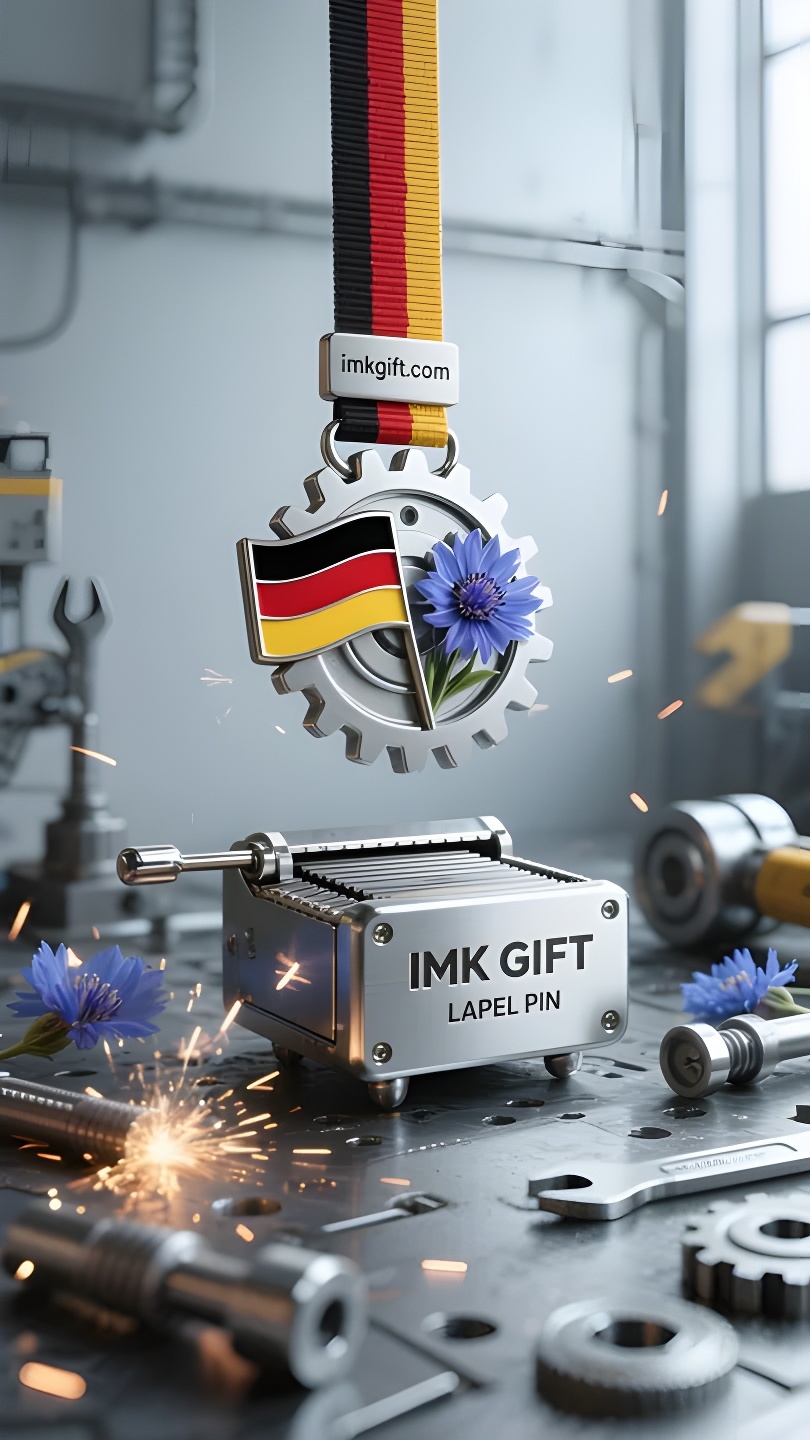in992-Kornblumen-auf-dem-Uhrwerk-die-nationale-Seele-erblüht-im-Zahnrad-der-Zeit
▼
Im Oktober durchdringt das goldene Sonnenlicht des Spätherbstes die blauen und violetten Blütenblätter der Kornblumen und bildet zusammen mit der schwarz-rot-goldenen Nationalflagge das Symbol des Nationalgeistes. In diesem Land, das Teilung und Wiedervereinigung erlebt hat, erzählt jede Spieldose, die ihre Feder dreht, eine Geschichte von Durchhaltevermögen und Hoffnung. Das mechanische Herz der Kornblumen-Spieldose verbirgt die Metapher einer Nation: Wie eine Feder, die von Hand aufgezogen werden muss, kann die deutsche Nation nach dem Dreißigjährigen Krieg und den beiden Weltkriegen im Biss ihrer Präzisionszahnräder die Bewegung des Lebens wiedererlangen. Der Biss jedes Kupferzahnrads steht für die Zusammenarbeit der Bundesländer und die Ordnung, in Unterschieden Resonanz zu finden. Wenn die Melodie der „Ode an die Freude“ aus der Spieldose erklingt, ist sie Martin Luthers Beharrlichkeit in der Wahrheit bei der Bibelübersetzung, Beethovens Schicksalssymphonie nach seinem Gehörverlust und das Zittern von Millionen Menschen, die sich beim Fall der Berliner Mauer umarmten. Die Kornblume auf der Spieldose ist kein zerbrechliches Schmuckstück. Sie ist in den Eigenschaften kargen Bodens verwurzelt, doch stets der Sonne zugewandt, genau wie das Wunder der Wiedergeburt dieser Nation in Trümmern. Jedes Mal, wenn sich die Feder dreht, vibriert das Rohrblatt nicht nur die Töne, sondern auch die Konzentration der Schwarzwälder Handwerker beim Schnitzen der Holzmaserung und das Licht, das die Bergleute im Ruhrgebiet hundert Meter unter der Erde freilegten. Auch heute noch gleicht Deutschland mit der Präzision präziser Maschinen das Gleichgewicht von Frieden und Entwicklung aus und lässt das Blau der Kornblumen und das Gelb des EU-Sterns im Lauf der Zeit neue Harmonien erklingen. Wenn die Musik verklingt und die Feder zu Ende geht, wird es immer jemanden geben, der das Ideal wieder aufzieht – dies ist vielleicht die bewegendste Allegorie deutschen Geistes.
In Germany in October, the golden sunlight of late autumn penetrates the blue and purple petals of cornflowers, and together with the black, red and gold national flag, it outlines the totem of the national spirit. In this land that has witnessed division and unification, every music box that turns the spring tells a story about perseverance and hope. The mechanical heart of the cornflower music box hides the metaphor of a nation: just like a spring that needs to be wound up by hand, the German nation can still play the movement of life again in the bite of precision gears after the rupture of the Thirty Years’ War and the two world wars. The bite of each copper gear is like the cooperation between federal states, and the order of finding resonance in differences. When the melody of “Ode to Joy” flows out of the music box, it is Martin Luther’s persistence in truth when translating the Bible, the symphony of destiny that Beethoven composed after losing his hearing, and the tremor of millions of people hugging each other when the Berlin Wall fell. The cornflower on the top of the music box is not a fragile decoration. It is rooted in the characteristics of poor soil but always facing the sun, just like the miracle of this nation’s rebirth in ruins. Every time the spring turns, the reed vibrates not only the notes, but also the concentration of the Black Forest craftsmen in carving the wood grain, and the light that the miners in the Ruhr area chiseled out a hundred meters underground. Today, Germany is still calibrating the balance of peace and development with the rigor of precision machinery, allowing the blue of cornflowers and the yellow of the European Union star to resonate new harmonies in the rotation of time. When the music fades and the spring is about to run out, there will always be someone who winds up the ideal again – this may be the most moving allegory of the German spirit.
十月的德国,深秋的金色阳光穿透矢车菊蓝紫色的花瓣,与黑红金三色国旗一同勾勒出民族精神的图腾。在这片见证过分裂与统一的大地上,每个转动发条的音乐盒,都在讲述一段关于坚守与希望的故事。
矢车菊音乐盒的机械心脏里藏着一个民族的隐喻:就像需要手工上紧的发条,德意志民族历经三十年战争、两次世界大战的断裂时刻,依然能在精密齿轮的咬合中重新奏响生命乐章。每颗铜制齿轮的咬合,都如同联邦州间的协作,差异中寻找共鸣的秩序。当《欢乐颂》的旋律从八音盒中流淌而出,那是马丁·路德翻译圣经时对真理的执着,是贝多芬失聪后仍谱写的命运交响,更是柏林墙倒塌时千万人相拥的震颤。
音乐盒顶端的矢车菊并非脆弱的装饰,它根植于贫瘠土壤却始终向阳的特性,正如这个民族在废墟中重生的奇迹。每当发条转动,簧片振动的不只是音符,更是黑森林工匠雕琢木纹时的专注,是鲁尔区矿工在百米井下凿出的光明。今天的德国,仍在以精密机械般的严谨校准着和平与发展的天平,让矢车菊的蓝与欧盟之星的黄,在时光的旋转中共振出新的和声。
当音乐渐弱,发条将尽,总会有人再次为理想上弦——这或许就是德意志精神最动人的寓言。
▼
Contact Us
📞 Tel: +0086-760-85286839
📧 Email: sales3@imkgift.com








